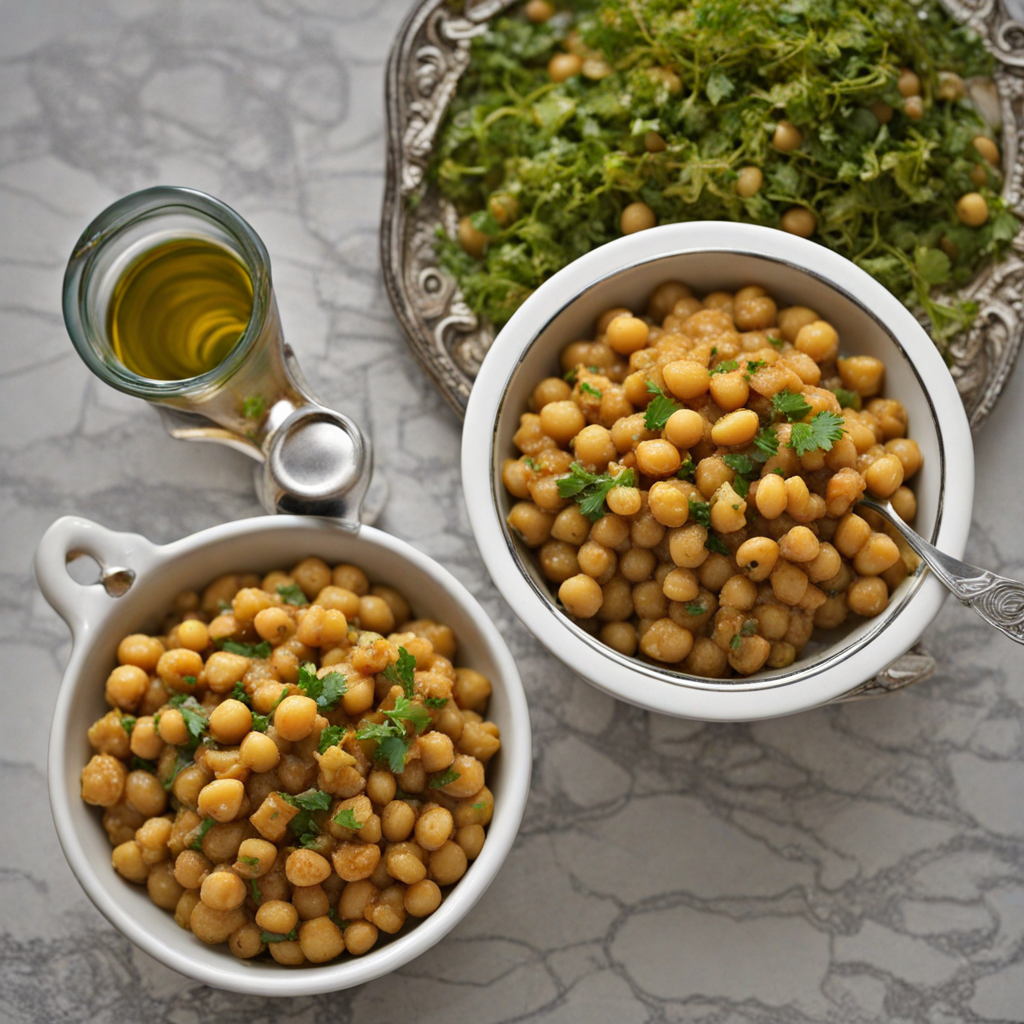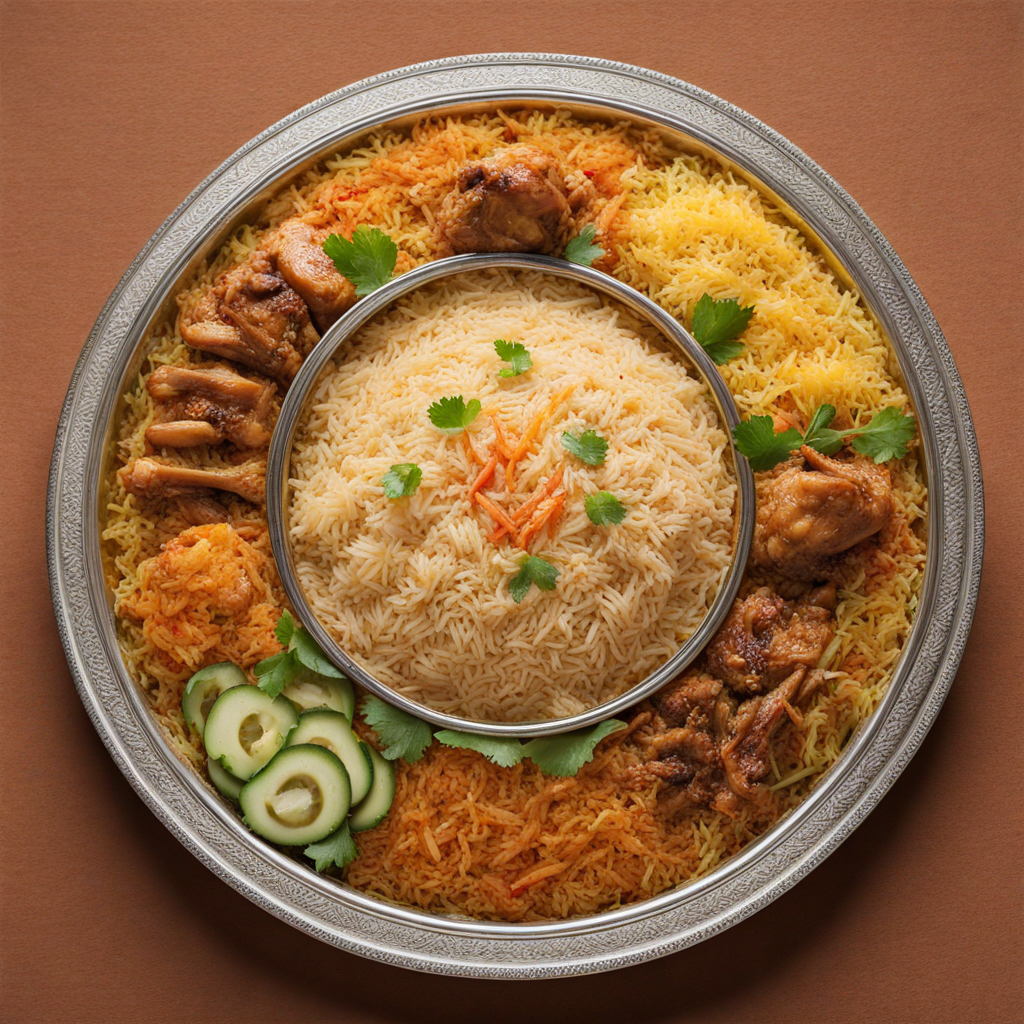Um Ali
Um Ali is a traditional Egyptian dessert that has found a cherished place in the hearts of many in Saudi Arabia. This warm, comforting dish is essentially a bread pudding, made from layers of flaky pastry, milk, and a medley of nuts and spices. The base of the dessert is typically made from pieces of stale or leftover bread, which are transformed into a luxurious treat by soaking them in a sweetened milk mixture. The addition of ingredients like sugar, cardamom, and vanilla creates a harmonious balance of flavors, while the nuts—usually pistachios, almonds, or walnuts—add a delightful crunch and richness to each bite. As the dish bakes in the oven, the aromas waft through the air, tantalizing your senses with hints of warmth and sweetness. The top layer often becomes lightly golden and crispy, while the insides remain creamy and soft, creating a delightful contrast in texture that is simply irresistible. The final touch may include a sprinkle of cinnamon or even some coconut flakes, enhancing the visual appeal and adding an extra layer of flavor that complements the overall experience. Um Ali is more than just a dessert; it is a symbol of hospitality in Saudi culture, often served during special occasions, family gatherings, or festive celebrations. Its rich history and comforting taste make it a beloved choice for many, inviting everyone to indulge in a taste of tradition. Whether enjoyed warm or at room temperature, Um Ali promises to deliver a satisfying and memorable culinary experience that transports you to the heart of Middle Eastern flavors.
How It Became This Dish
The History of 'أم علي' (Umm Ali): A Culinary Gem from Saudi Arabia Origins: The Birth of a Sweet Legacy Umm Ali, which translates to "Mother of Ali," is a beloved traditional dessert that hails from the Arabian Peninsula, with particularly strong ties to Saudi Arabian culture. Its origins can be traced back to the Mamluk period in Egypt during the 13th century. The story goes that the dessert was created in honor of a woman named Umm Ali, the wife of Sultan Ezz al-Din Aybak, who was the first sultan of the Mamluk Sultanate. According to popular legend, after the sultan's death, Umm Ali sought to solidify her power and status by creating a dish that would win the hearts of the people and serve to elevate her position. The dessert was crafted using simple yet rich ingredients, reflecting the agricultural abundance of the region. The combination of bread, milk, nuts, and sugar was both accessible and indulgent, making it a perfect tribute to her late husband. Cultural Significance: A Symbol of Hospitality and Family Umm Ali is more than just a dessert; it carries deep cultural significance in Saudi Arabia and the broader Arab world. It is often prepared during festive occasions, family gatherings, and religious celebrations, symbolizing hospitality and familial love. The dish encapsulates the values of generosity and community, as it is typically made in large quantities to serve many guests. In Saudi households, Umm Ali is a staple during Ramadan, the holy month of fasting, where it is served as a sweet treat to break the fast. The dish's rich, creamy texture and delightful flavors make it a perfect end to the day’s fast, providing both comfort and nourishment. The act of preparing and sharing Umm Ali strengthens familial bonds, as recipes are often passed down through generations, each family adding its own twist to the classic dish. Ingredients and Preparation: A Traditional Craft Umm Ali is traditionally made with layers of torn pieces of bread (often puff pastry or stale bread), soaked in sweetened milk, and topped with a variety of nuts such as almonds, pistachios, and sometimes coconut. The dish is baked until golden brown, allowing the flavors to meld and the top to become crispy while the layers beneath remain soft and custardy. The preparation of Umm Ali requires a balance of skill and intuition. The choice of ingredients can vary widely, with some families opting for the addition of raisins, chocolate, or even fruits like bananas. This adaptability is part of what makes Umm Ali unique to each household, reflecting personal tastes and regional variations. Evolution Over Time: From Royalty to the People As the centuries passed, Umm Ali transitioned from a royal delicacy to a beloved dish enjoyed by the masses. The rise of trade routes and cultural exchanges during the Islamic Golden Age facilitated the spread of culinary traditions across the Arab world. This movement allowed Umm Ali to gain recognition beyond Egypt and Saudi Arabia, becoming a cherished dessert in countries such as Lebanon, Jordan, and the United Arab Emirates. With globalization and the influence of modern culinary practices, Umm Ali has undergone various adaptations. Contemporary chefs have experimented with the traditional recipe, introducing innovative ingredients and presentation styles. For instance, some versions incorporate chocolate or caramel, catering to modern palates while maintaining the essence of the original dish. In recent years, Umm Ali has also found its way onto restaurant menus, bridging the gap between traditional home cooking and contemporary dining experiences. Upscale variations might include gourmet twists, such as artisanal bread or infused milk, showcasing the dessert's versatility and enduring appeal. Umm Ali in the Modern Era: A Culinary Icon In today’s world, Umm Ali stands as a culinary icon in Saudi Arabia, representing not just a dessert but a rich tapestry of history, culture, and familial traditions. The dish is often featured in food festivals, cultural exhibitions, and cooking classes, highlighting its importance in the Saudi culinary landscape. Social media has also played a significant role in the resurgence of interest in traditional dishes like Umm Ali. Home cooks and food enthusiasts share their unique recipes and stories, creating a sense of community among those who cherish this dessert. Online platforms provide a space for discussions about the best techniques, ingredient substitutions, and personal anecdotes related to Umm Ali, fostering a connection among individuals across different regions. Moreover, the emphasis on heritage and authenticity in the culinary world has reignited appreciation for traditional dishes. Chefs and home cooks alike are motivated to preserve the essence of Umm Ali while exploring new dimensions of flavor and presentation. This evolution reinforces the importance of food as a living history, constantly adapting while retaining its cultural roots. Conclusion: A Legacy of Love and Flavor Umm Ali is far more than a sweet dish; it is a celebration of history, culture, and love. Its story reflects the journey of a woman who sought to honor her late husband and the subsequent evolution of a dish that has become intertwined with the fabric of Saudi Arabian society. As it continues to be enjoyed in homes and restaurants alike, Umm Ali remains a testament to the enduring power of food to foster connections, convey tradition, and create lasting memories. In every spoonful of this creamy, nutty dessert, one can taste the rich history and the warmth of a culture that values family, hospitality, and the joy of sharing food. As Umm Ali continues to evolve, it will undoubtedly remain a cherished symbol of Saudi Arabian culinary heritage for generations to come.
You may like
Discover local flavors from Saudi Arabia







